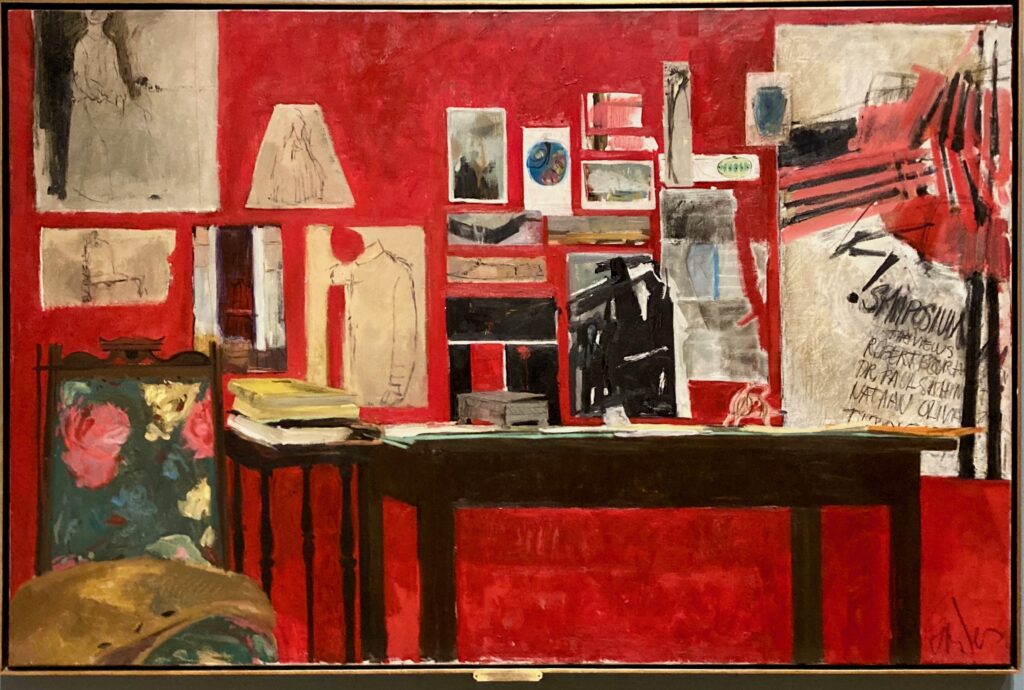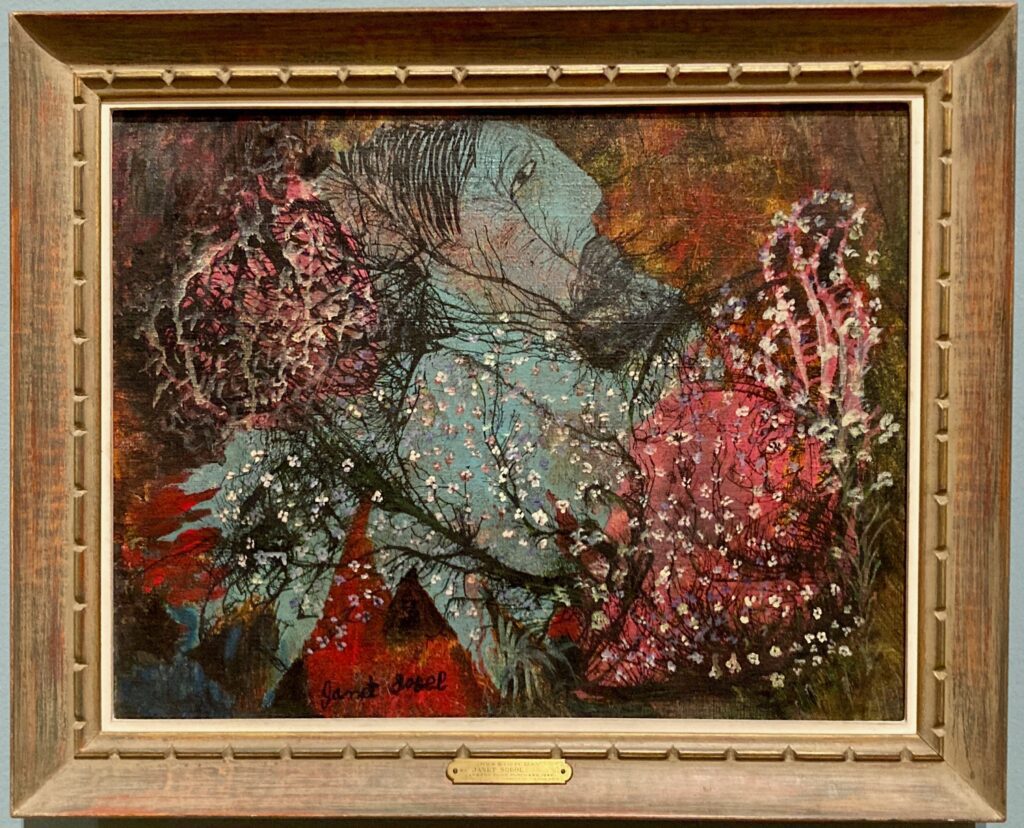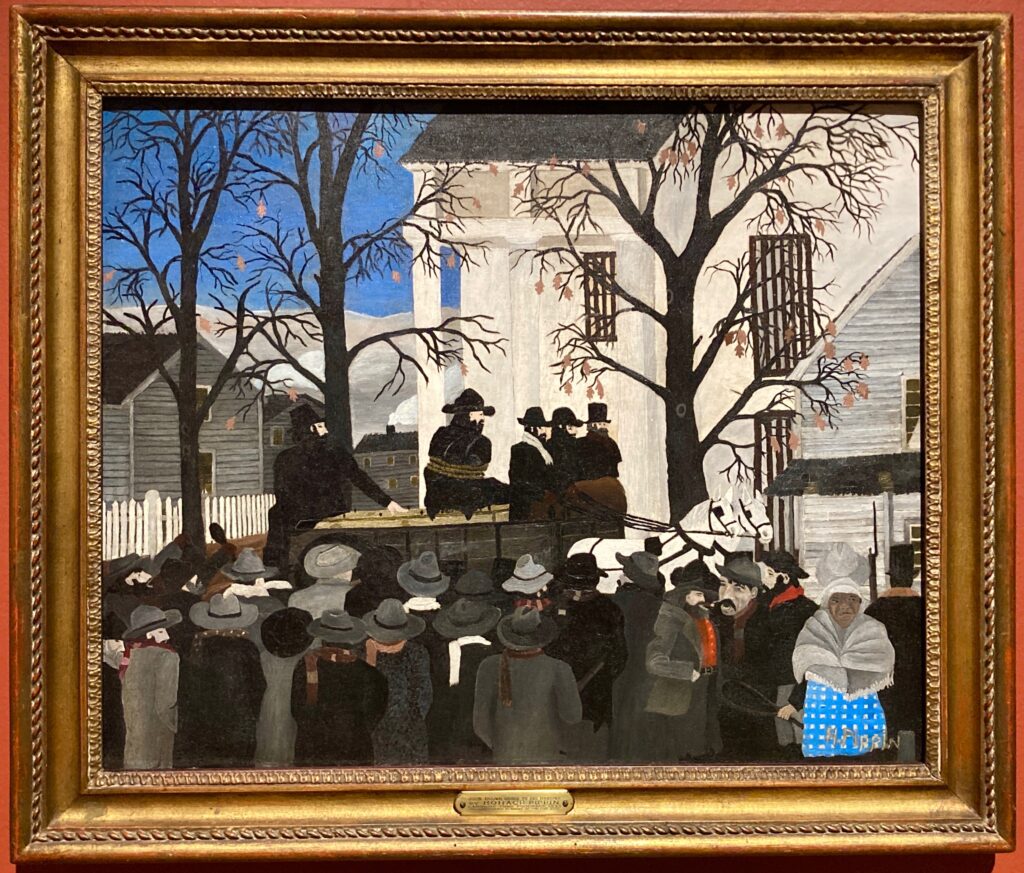American Art in Philadelphia, at PAFA
By • March 16, 2023 0 2012

Far older than either the Philadelphia Museum of Art (1876) or the Barnes Foundation (1922), the Pennsylvania Academy of the Fine Arts is the nation’s longest-running art museum and art school, founded in 1805. Many leading lights of 19th– and early 20th-century American art — notably Mary Cassatt, Thomas Eakins, Cecilia Beaux, Robert Henri, John Marin, John Sloan, Paul Manship and Maxfield Parish — studied or taught there or both.
An exhibition closing soon, “Making American Artists: Stories From PAFA, 1776-1976,” curated by Dr. Anna Marley, is a lavish display of works from the collection, intermingling historical and contemporary paintings by type (portrait, landscape, still life, genre painting, history painting) and bringing less-familiar names to the fore.
PAFA’s collection boasts a number of essential works of American art. On view: one of Gilbert Stuart’s four full-length “Lansdowne Portraits” of George Washington; John Vanderlyn’s “Ariadne Asleep on the Island of Naxos” of 1809-14, a nude in the then-scandalous French Salon style; “The Artist in His Museum” of 1822, showing PAFA co-founder Charles Willson Peale lifting a velvet curtain, revealing walls lined with taxidermied fowl; “The Turkish Page,” Munich-trained Frank Duveneck’s 1876 exercise in exoticism, complete with cockatoo (speaking of birds); Thomas Eakins’s 1887-88 portrait of the aging Walt Whitman; and Winslow Homer’s “Fox Hunt” of 1893 (more birds), his first painting to enter a public collection, and possibly his greatest.
One of the installation’s stated goals is to offer “new narratives in American art history, embracing stories about women artists, LGBTQIA+ artists, and artists of color.” In the Hamilton Building’s central corridor, before one enters the gallery spaces, paintings by white male artists from the American art “canon,” such as Milton Avery, George Bellows, Thomas Hart Benton, Stuart Davis, Arthur Dove, Childe Hassam, Charles Sheeler and Sloan, alternate with works by, for example, Elizabeth Osborne, Laura Wheeler Waring, Dox Thrash and Barkley Hendricks.
Slides on a monitor provide historical context. Visitors learn that women began taking classes at PAFA in 1844 (drawing from casts, with anatomy following in 1860 and life drawing in 1868) and that Beaux, the famed portraitist, became the school’s first full-time woman faculty member in 1895. Another slide explains that Henry O. Tanner, an early Black student and the only one at the time, studied with Eakins in the 1880s. His “Nicodemus” (on view) was purchased from PAFA’s 1899 Annual Exhibition. (Tanner is best known for his 1893 painting “The Banjo Lesson,” often reproduced.)

“Invasion Day,” 1944. Janet Sobel.
Among the impressive works by women in the show are: Beaux’s “A Little Girl” of 1887; Lilian Westcott Hale’s “When She Was a Little Girl,” c. 1918; Hilda Belcher’s “The Easter Window,” c. 1920; Waring’s “The Study of a Student,” c. 1940s; Janet Sobel’s “Invasion Day,” of 1944; “Woman with Red” by Osborne, an alumna who taught at PAFA from 1961 to 2011; and two by art-world stars, Alice Neel (the 1933 “Investigation of Poverty at the Russell Sage Foundation”) and Louise Nevelson (the painted-wood construction “South Floral” of 1972). The sole woman of color among them, Waring, who won a scholarship to study in Paris, became head of the art and music department at what is now Cheyney University, an HBCU west of Philadelphia.

“A Little Girl,” 1887. Cecilia Beaux.
In addition to Tanner’s “Nicodemus,” works in the show by Black men include: the 1942 “John Brown Going to His Hanging” by the much-admired self-taught artist Horace Pippin, purchased from PAFA’s 1943 Annual Exhibition; a c. 1938 oil self-portrait by Thrash, an important Philadelphia-based printmaker; Hendricks’s “J. S. B. III” of 1968, a portrait, in his bold, breakthrough style, of a fellow Black student at PAFA, where Hendricks was mentored by Louis Sloan, an alumnus who became the first full-time Black faculty member; and “La Chambre” of 1961, an homage to Henri Matisse’s “Red Studio” by Raymond Saunders, now in his late 80s, a retired professor of painting in California.

“John Brown Going to His Hanging, 1942. Horace Pippin.
Since the show will tour for two years after it closes on April 2, now is the time to see these works on their home turf. On March 23, a joint exhibition with the nearby African American Museum in Philadelphia, “Rising Sun: Artists in an Uncertain America,” will open in PAFA’s spectacular 1876 building (now closed) and at AAMP. Among the 20 participating contemporary artists: John Akomfrah (AAMP), Petah Coyne (PAFA), Martha Jackson Jarvis (AAMP), Alison Saar (PAFA), Renée Stout (AAMP), Deborah Willis (AAMP) and Hank Willis Thomas (AAMP).
Pennsylvania Academy of the Fine Arts
118-128 North Broad Street, Philadelphia
215-972-7600 pafa.org
Thursday and Friday, 10 a.m. to 4 p.m.
Saturday and Sunday, 11 a.m. to 5 p.m.

